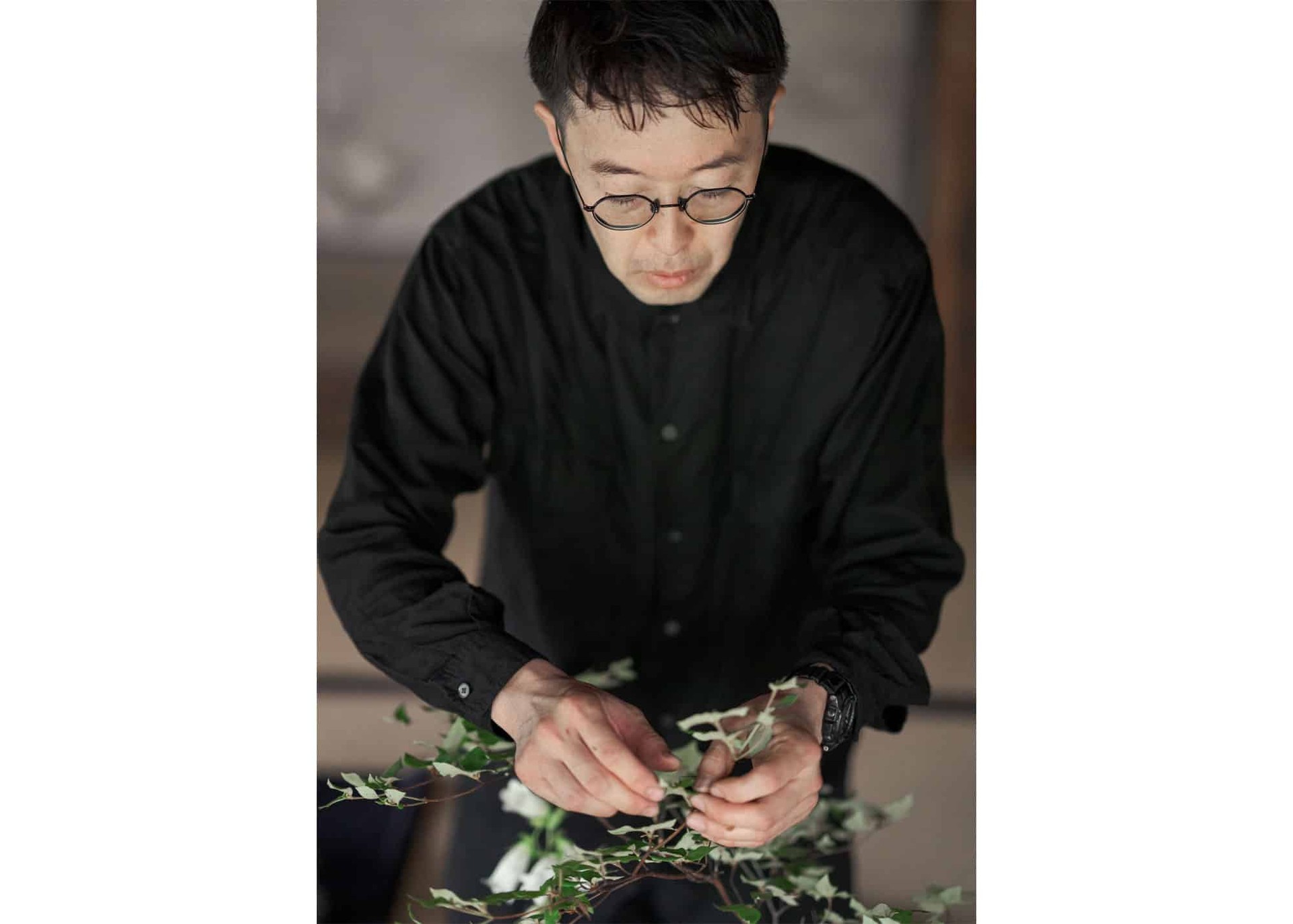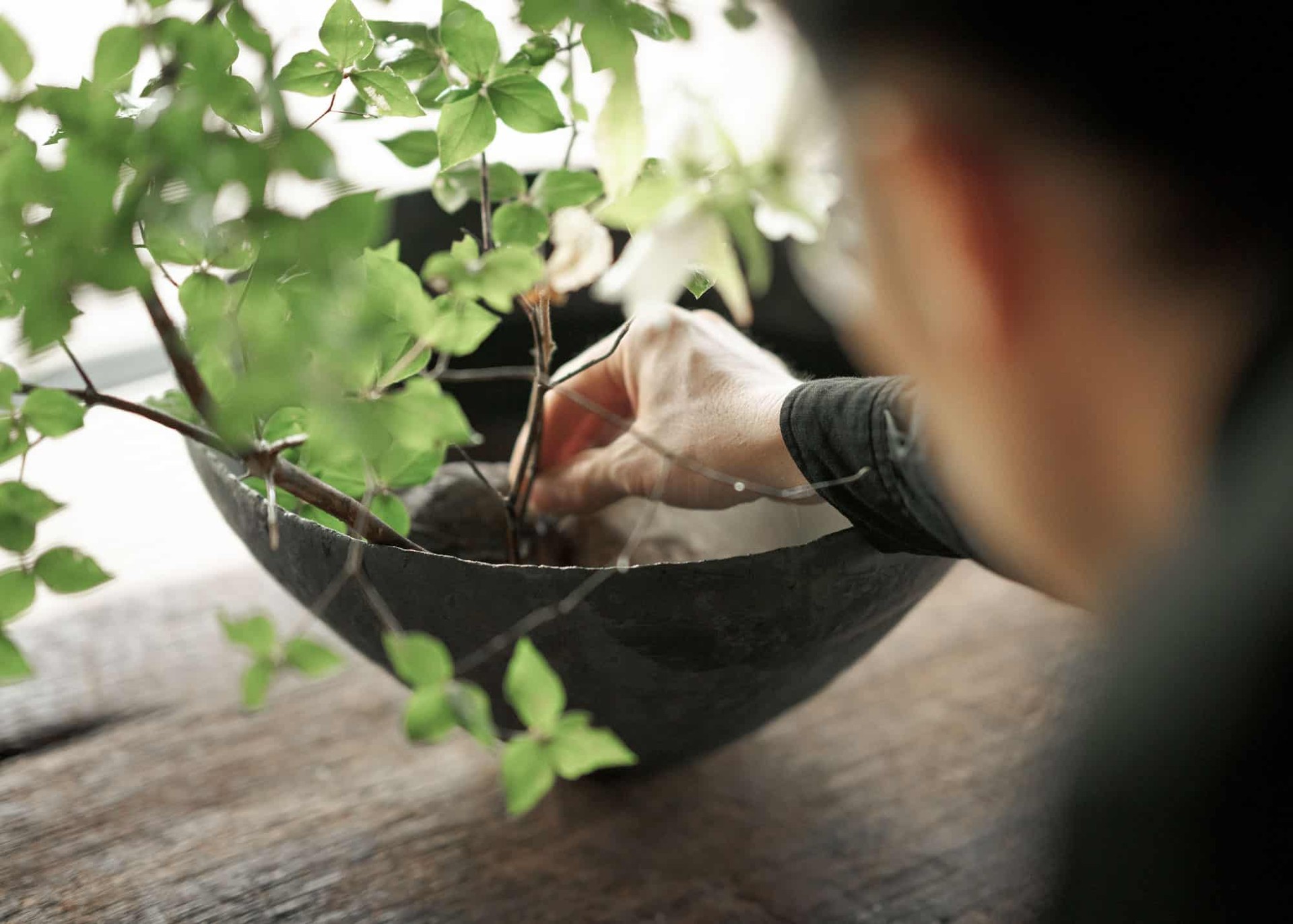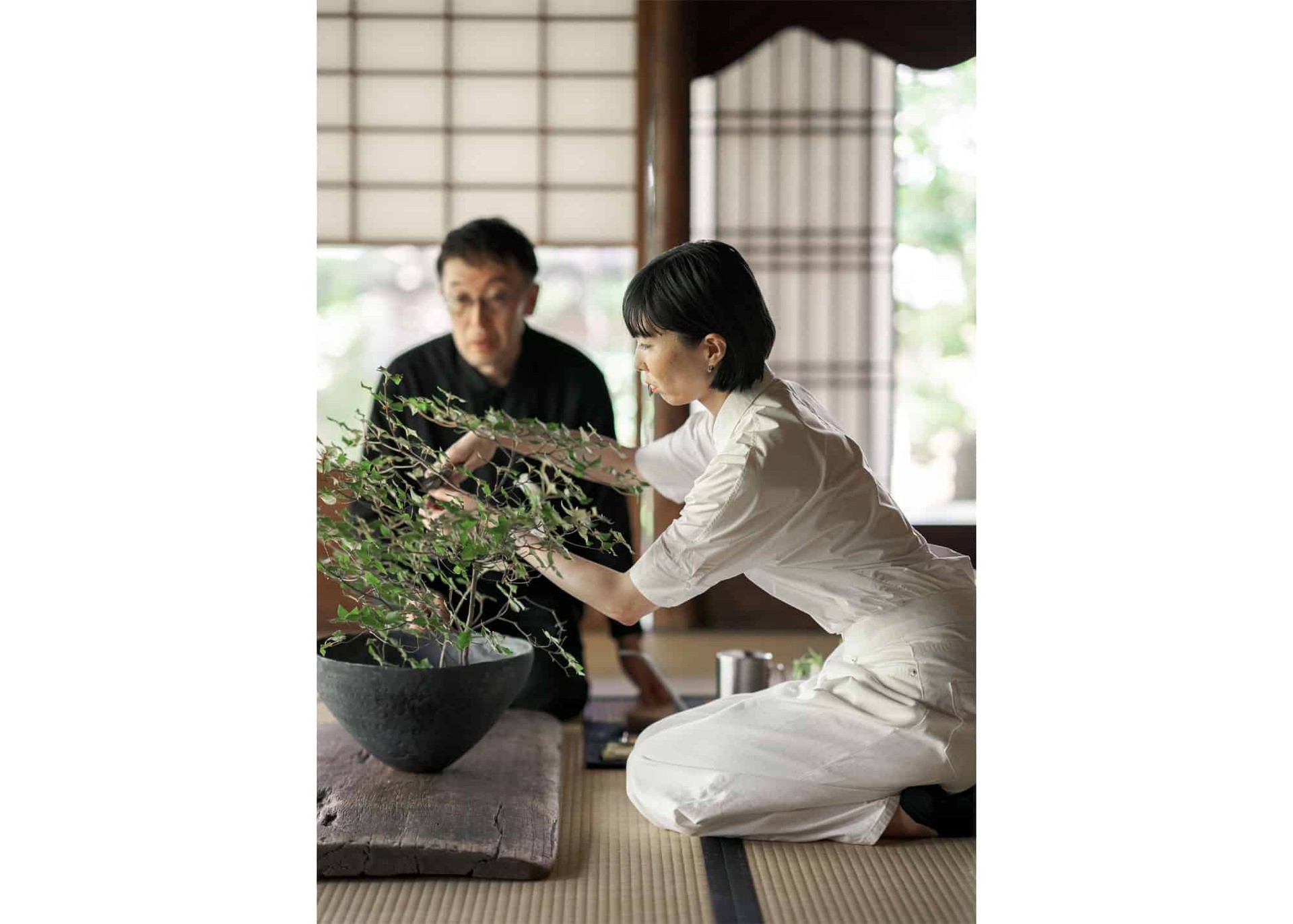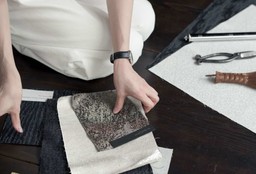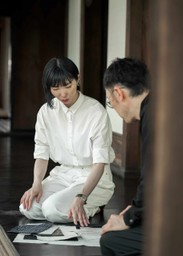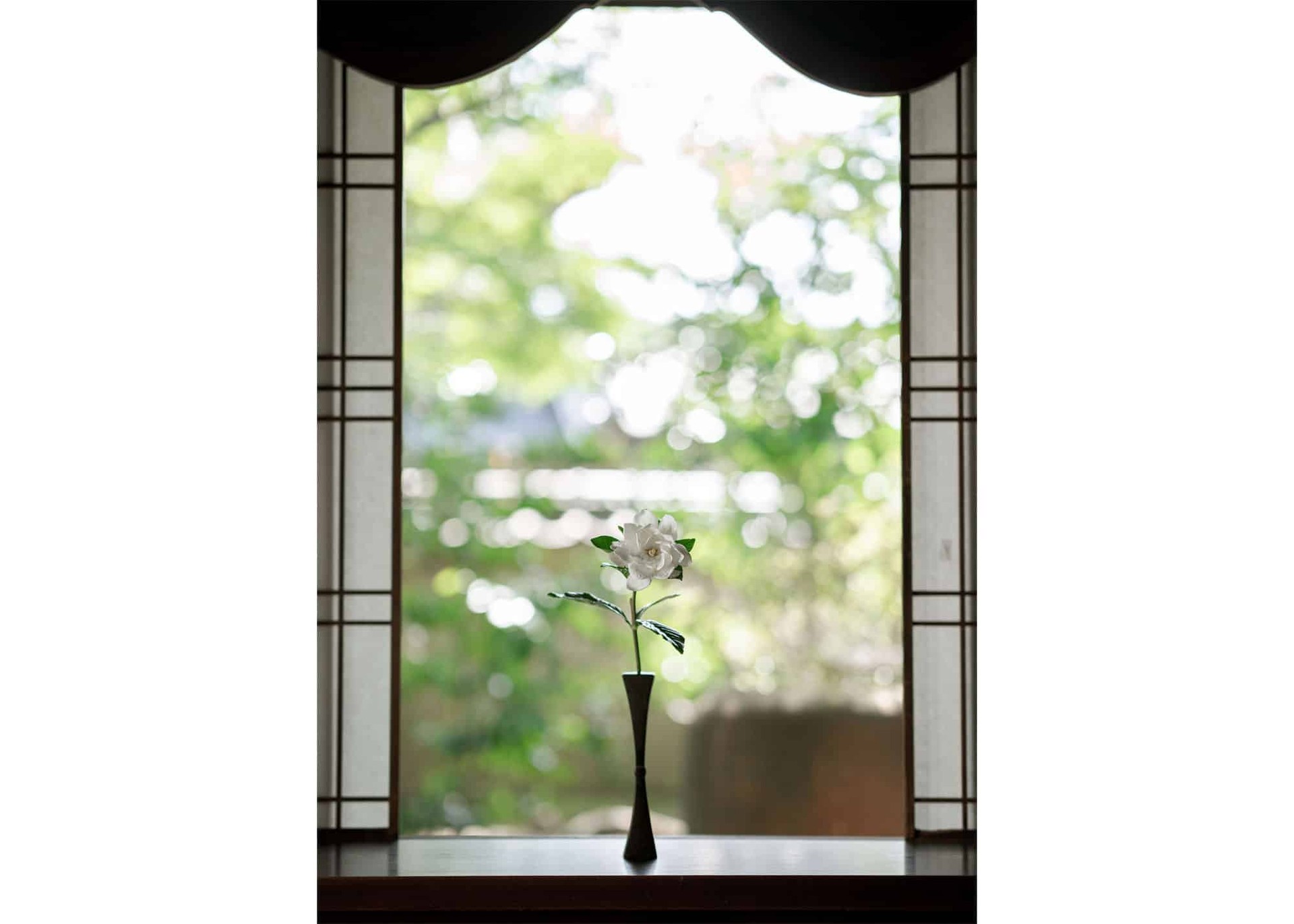Inspire
IKEBANA: NATURAL HARMONY
How Japanese flower arranging influenced Mazda designer Mai Utagawa.
She is Mazda Color and Trim designer Mai Utagawa. He is ikebana artist Mario Hirama. In a perfectly proportioned, uncluttered corner room in a post-and-beam house built with wood joinery in the hills of Kobe, Japan, the two have come together to explore the concept of space as they create an ikebana flower arrangement.
Soft light streams in under the deep eaves onto the tatami mat floors, paper shoji doors, and floor-to-ceiling windows opening to a Japanese garden. This designer, who creates permanent interior spaces in cars, and this artist, who creates ephemeral spaces lasting but a few days, speak the same language—of simplicity, color, line, texture, shape, light and shadow, and design by removal.
“Entrusting one’s heart to a flower is a luxurious extravagance that has evolved at the center of Japanese artistic culture.”
Mario Hirama
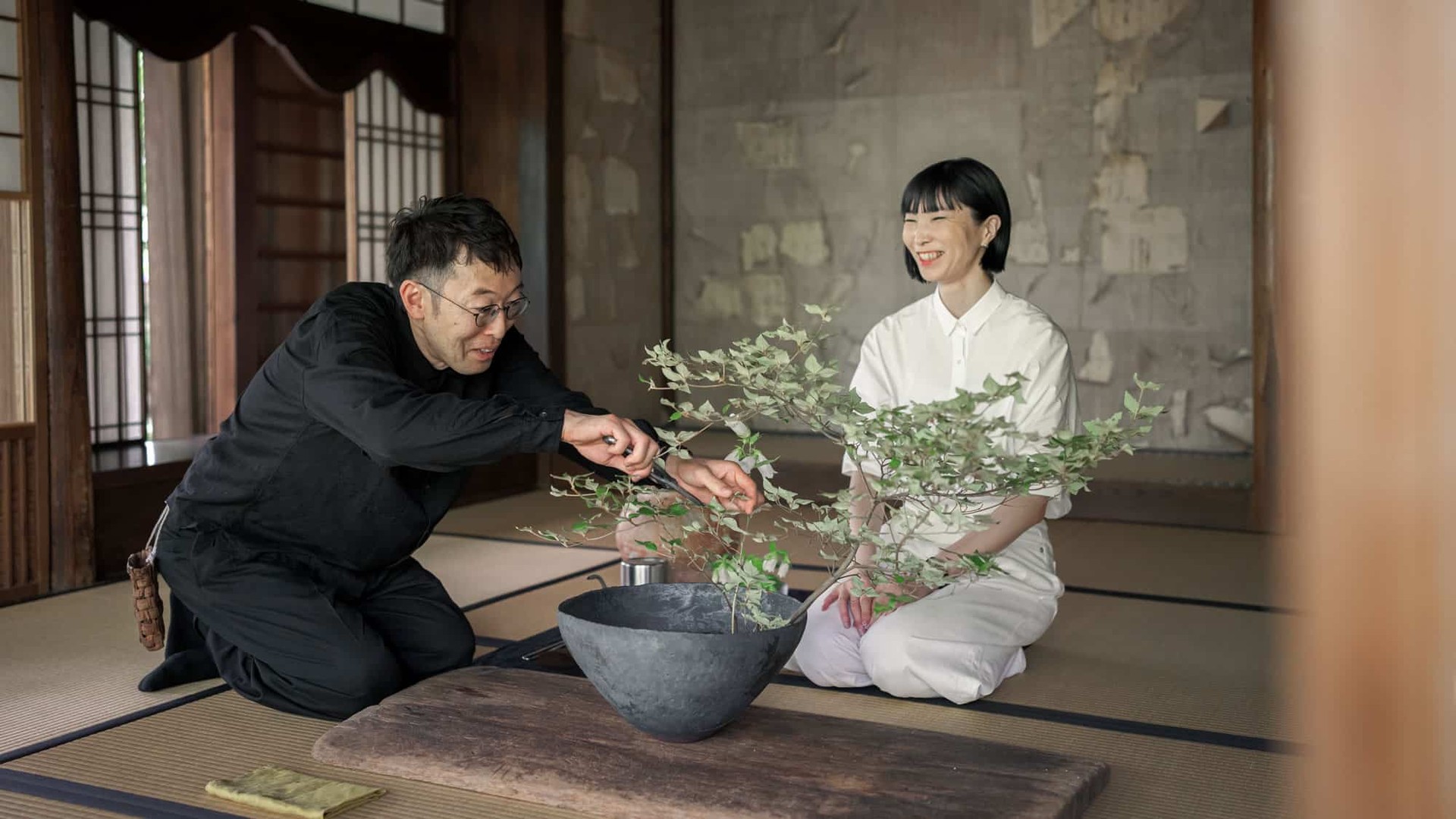
Their conversations today could be understood by people from any culture. Rather than sounding like a “Japan only” philosophy, Hirama’s ikebana feels open and universal. Yet each brings a sensibility and spirit that is unmistakably Japanese.
“I attended one of Hirama’s workshops,” shares Utagawa, “at a time when I was preoccupied with the theme of Japanese beauty for a car interior project.” Hirama describes ikebana as giving life to a space that is uniquely experienced in each passing moment. Flowers, vase, wooden base, background, margins, and light harmoniously occupy the entire space.
“Hearing about his spatial approach,” she continues, “deepened my understanding of how balance can be achieved in a space by harmonizing its materials. For example, incorporating a wood surface into a car interior that responds beautifully to unevenly fluctuating natural light can create a feeling that changes with each moment, like with ikebana.”
Ikebana: bringing flowers to life.
Hirama’s and Utagawa’s educations differed, but both resulted in high design sensibility. Hirama studied under an ikebana teacher for six years before going independent and developing his own style. Utagawa studied product design at university and then at Mazda she focused on color design. Training for both involved tackling one design problem after another through trial and error over many years.
Hirama continued on his own, exploring texture, color, and space while creating with live plants, wood, and ceramics. Utagawa’s work at Mazda also involved texture, color, and space in coordinating interior design with leather, cloth, and surface decoration. “It was at Mazda where I gained an appreciation for the fastidiousness, care, and meticulous attention to detail of Japanese craftsmanship.”
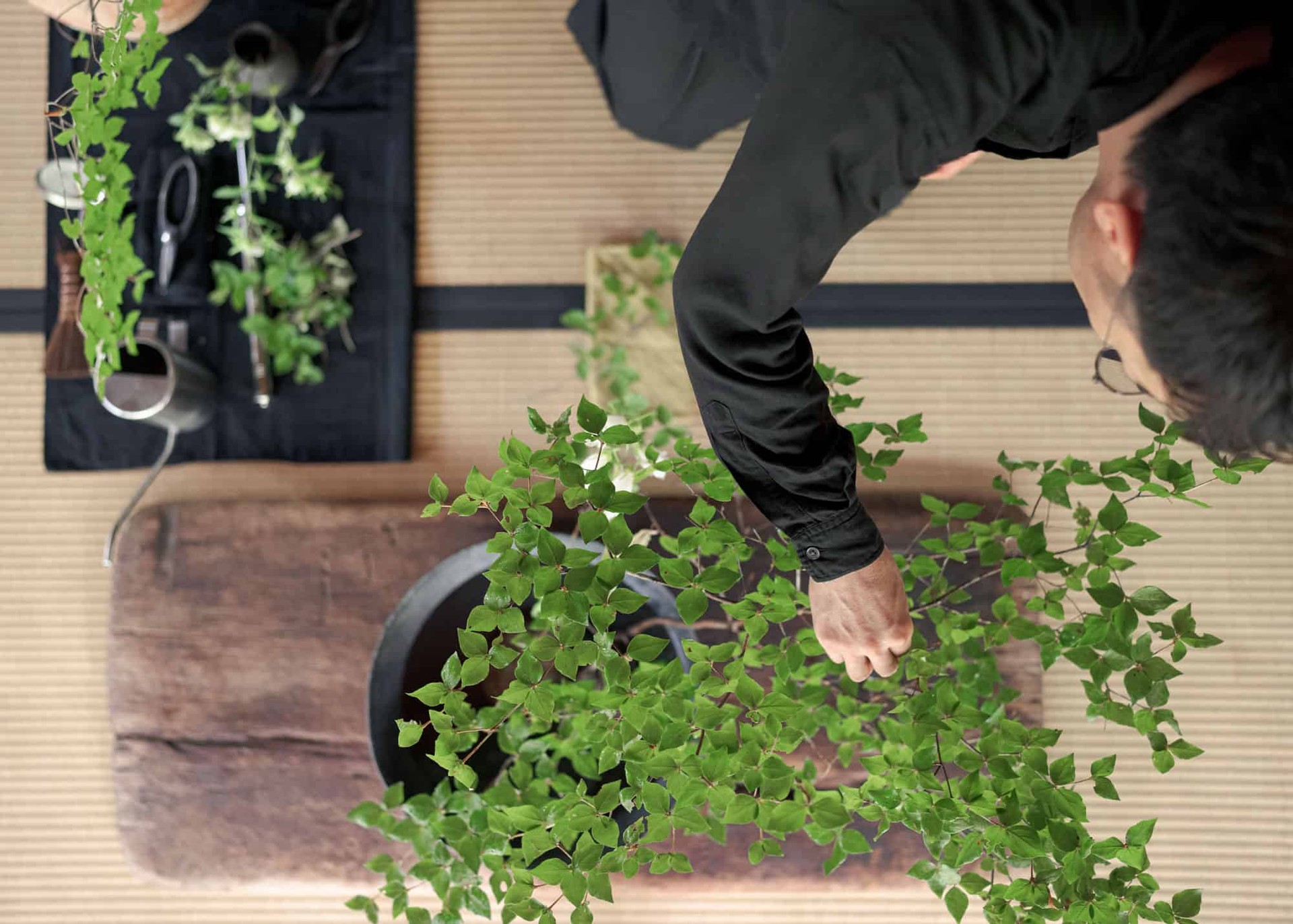
what is ikebana?
Unlike traditional western floral arrangements, which are associated with decorative masses of colorful flowers, ikebana is a minimalist art form. Emphasis is placed as much on the space around the arrangement (Ma), the way the light falls and the shadows that are cast by it, as the creation itself. It’s almost sculptural in that the form, lines and shape of the plant is carefully considered.
Ikebana, which translates literally as “bringing flowers to life,” originated in the sixth century as the practice of placing flowers on Buddhist altars. During the 1500s, it developed in new directions, becoming an integral part of the Tea Ceremony as well as a way to symbolically display authority and wealth in feudal castles.
Today as many as 2,000 unique and largely secular ikebana schools exist. For many ikebana students it becomes a lifelong study that nurtures and develops one’s individual, intuitive sense of beauty and design.
Recalling the previous workshop with Hirama, Utagawa says, “I was captivated by his careful preparation of the ikebana space and the way he consciously and sensitively met each flower. This renewed my own intention to always bring this kind of spirit to my work at Mazda.”
Hirama demonstrates those qualities over and over on this day in Kobe. In preparation for arranging, he removes everything from the room and thoroughly cleans it. He brings in a weathered wooden platform for the vase and carefully measures the area to ensure perfect placement before meticulously laying out his tools on a folded black cotton cloth. “Methodically setting up the space makes the actual work of arranging so much easier and fun,” he shares as he once again sweeps the area clean.
“I want people to experience the kind of wondrous beauty that exists only in spontaneous moments.”
Mai Utagawa
Utagawa shows Hirama the materials she chose that were inspired by his work.
Hirama invites Utagawa to begin by helping choose a vase. “In ikebana,” he explains, “the vase is a stage that enhances the flowers’ brilliance. It must have its own rich expression.” They decide on a large black bowl and place it asymmetrically on the wooden base. He suggests that they choose just a few flowers, giving their full attention to each one.
The mantra “simplicity is powerful” defines his work. After securing a branch of green foliage in the vase, Utagawa begins removing leaves and stems that she feels are unnecessary, which exposes the surface of the water in the vase.
After carefully studying a half dozen white flowers, Hirama places his favorite into the bowl. “I take time to carefully adjust each part of the arrangement. The direction of the light is important, and I want viewers to connect with both seen and unseen elements in the space.”
Vessel and spacing are as important as the foliage.
Hirama continues: “There exists something extending beyond the flower itself, something which fills the space. You may sense it, imagine it, feel it, smell it. It is an atmosphere, a kind of presence.” After considerable re-adjusting of subtle leaf positions, he hands Utagawa a water pump. Standing high above and behind, she completes their ikebana with a fine, rain-like mist.
Earlier in the day, Utagawa had shared her realization that the theme of Japanese beauty for a car interior could be experienced “as a warm and comfortable part of daily life, like making a delicious cup of tea.” Or perhaps as a softly lit space with raindrops on flowers.
“To create an ikebana is to ‘live in the moment,’ where neither past nor future exists. We are briefly and intensely inspired, and then we let it go.”
Mai UTAGAWA
Words Steve Beimel / Images Irwin Wong

find out more
Mazda‘s elegant interior trim
View the range of interiors in the Mazda vehicle lineup
